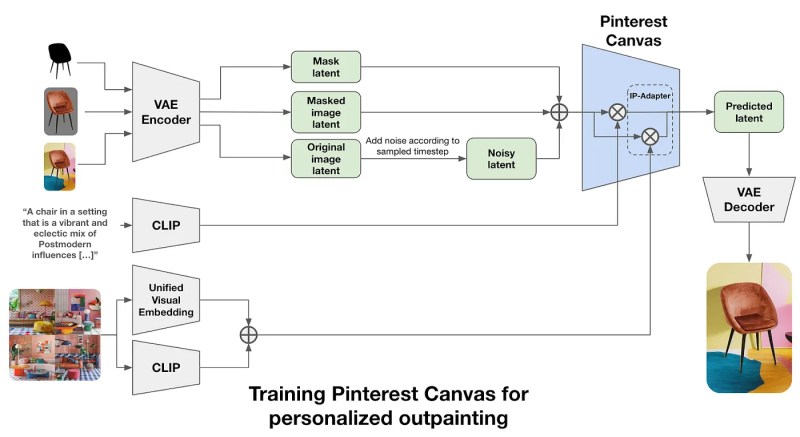
Join our daily and weekly newsletters for the latest updates and exclusive content on industry-leading AI coverage. Learn More
At the VB Transform conference this week, Pinterest executives pulled back the curtain on Canvas, their new generative AI foundation model designed to enhance existing images and products on the platform. This revelation marks a significant leap in Pinterest’s AI strategy, positioning the company at the forefront of visual discovery technology.
Anthony Suarez, senior director of developer enablement at Pinterest, introduced Canvas to an eager audience of tech leaders and innovators. “We made assumptions at the beginning that the pace of innovation would really require us to be adapting and evolving what we built to keep up with an changing landscape,” Suarez explained.

Canvas stands out from other text-to-image models by focusing on enhancing existing images rather than generating new ones from scratch. This approach aligns perfectly with Pinterest’s core mission of inspiring users through visual discovery.

From inspiration to creation: Canvas’s role in Pinterest’s AI-powered ecosystem
Alice Chang, engineering manager in the advanced technologies group, demonstrated Canvas’s capabilities live on stage. “We believe that being able to articulate your tastes is the key to building a much richer and deeper understanding of yourself,” Chang said as she showcased the model’s potential.
The model’s ability to manipulate and enhance existing images opens up new possibilities for users and brands alike. Retailers could use Canvas to show their products in various settings, while users could explore different ways to style their homes or wardrobes.
“We saw an opportunity to combine LLMs with the power of the Pinterest taste graph and visual search to generate these personalized insights,” Chang added.

Balancing innovation and trust: Pinterest’s approach to responsible AI development
While the excitement about Canvas was palpable, Pinterest executives also emphasized their commitment to responsible AI development. Suarez outlined the company’s STEAM framework — Simple, Tailored, Extensible, Accountable, and Measurable — which guided Canvas’s development.
“We wanted everything from the ground up to have safety built in by Design so that what we built was accountable,” Suarez explained. “So with Gen AI really there’s a new set of risks and challenges and when it comes to data security and user privacy, it’s really important that we’re catching and testing for those things early and process.”

This focus on safety and trust sets Pinterest’s approach apart in the rapidly evolving generative AI landscape. By prioritizing the enhancement of existing content rather than unrestricted generation, Pinterest aims to maintain the authenticity and trustworthiness of its platform.
Industry analysts at the conference noted that Canvas could be a game-changer for Pinterest. “Generative AI is a total Game Changer, but it’s not a magic wand that you can wave to solve your problems on its own,” said Chang, reflecting on the potential impact of the technology.
As the demo concluded, the implications of Canvas became clear. With Canvas, the company is betting that the future of online inspiration lies not in generating entirely new images, but in helping users see existing ones in new, personalized ways.
The introduction of Canvas at VB Transform marks a new chapter in Pinterest’s story. As the platform continues to evolve, all eyes will be on how Canvas transforms the user experience and whether it can indeed bridge the gap between digital inspiration and real-world action.
Source link





